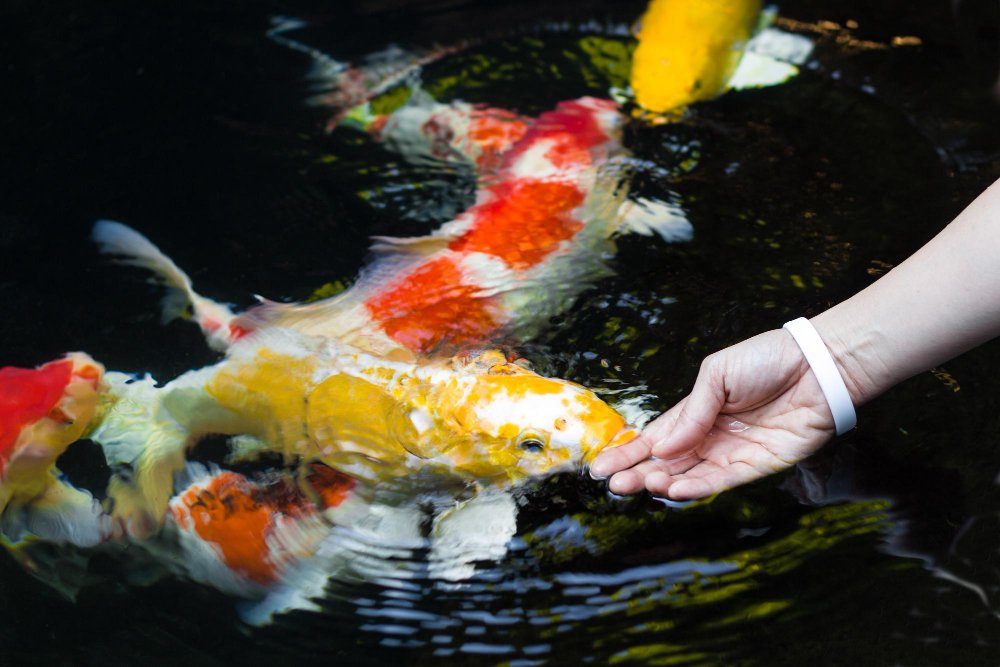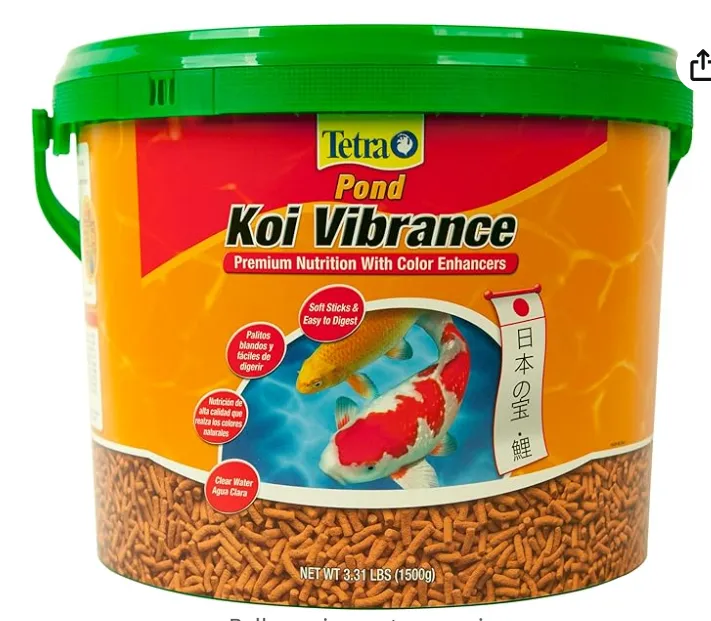

How Often Should You Feed Koi Fish? A Complete Guide to Koi Feeding
How Often Should You Feed Koi Fish?, If you’re a koi fish enthusiast, you already know that their vibrant colors and graceful movements can transform any pond into a mesmerizing oasis. But keeping koi healthy and thriving depends largely on one critical factor: feeding them properly. In this comprehensive guide, we’ll discuss everything you need to know about how often to feed koi fish, the right foods to offer, and how to optimize their feeding schedule to ensure their health and longevity.
Why Proper Feeding Matters How Often Should You Feed Koi Fish?
Feeding koi fish correctly is essential for their growth, vibrant coloration, and overall health. Overfeeding or underfeeding can lead to health problems, water quality issues, and even shorten their lifespan. By understanding koi dietary needs and creating a balanced feeding schedule, you’ll ensure your koi flourish in their environment.
What Do Koi Fish Eat? How Often Should You Feed Koi Fish?
Koi fish are omnivorous and consume a variety of foods, including:
- Natural Diet: Algae, plankton, small aquatic insects, and plant matter.
- Commercial Koi Pellets: Specially formulated food designed to meet their nutritional needs.
- Treats: Fruits like watermelon and oranges, vegetables like lettuce and peas, and protein-rich options like shrimp and earthworms.
- Supplements: Spirulina, krill, and wheat germ for enhanced growth and coloration.
Key Factors That Influence Koi Feeding Frequency
Several factors determine how often you should feed your koi:
1. Water Temperature
Koi are cold-blooded, so their metabolism depends on the water temperature:
- Above 20°C (68°F): Feed 2–4 times daily.
- Between 10°C–20°C (50°F–68°F): Feed once daily with easily digestible food.
- Below 10°C (50°F): Stop feeding, as their digestive system becomes dormant.
2. Seasonal Changes
- Spring: Start feeding when water temperatures exceed 10°C (50°F), using low-protein, easily digestible food.
- Summer: Increase frequency and switch to high-protein food to support growth.
- Autumn: Reduce feeding as temperatures drop and transition to wheat-germ-based food.
- Winter: Avoid feeding entirely during dormancy.
3. Age and Size of Koi
- Juvenile koi require more frequent feedings to support rapid growth.
- Adult koi benefit from a more moderate feeding schedule.
4. Pond Environment
- Rich ponds with abundant algae and natural food sources reduce the need for additional feeding.
- Poorly maintained ponds may require more frequent and controlled feeding.
How Much Should You Feed Koi Fish?
Portion Control: Feed only what your koi can consume within 5 minutes. Leftover food pollutes the water and impacts koi health.
Signs of Overfeeding: Cloudy water, uneaten food, and sluggish koi indicate overfeeding. Excess food can decay and harm water quality.
Signs of Underfeeding: Thin koi, reduced activity, or aggressive behavior during feeding may signal insufficient nutrition.
Best Foods for Koi Fish
1. Commercial Koi Food
Choose high-quality pellets or flakes that match your koi’s size and seasonal needs. Opt for:
- High-protein pellets for growth during summer.
- Wheat-germ-based food for easier digestion in cooler months.
2. Natural Food Options
Supplement their diet with natural treats such as:
- Fruits: Watermelon, oranges, and apples (remove seeds).
- Vegetables: Lettuce, spinach, and cooked peas.
- Protein: Shrimp, earthworms, and bloodworms.
3. Supplements for Enhanced Coloration
Include foods rich in carotenoids and spirulina to enhance koi’s vibrant hues. Krill and shrimp are excellent choices.
Koi Feeding Schedules by Season How Often Should You Feed Koi Fish?
Spring Feeding Schedule
- Begin feeding lightly as water temperatures rise above 10°C (50°F).
- Use low-protein, easily digestible food like wheat germ.
Summer Feeding Schedule
- Feed 2–4 times daily with high-protein food to support growth.
- Ensure they consume all food within 5 minutes.
Autumn Feeding Schedule
- Gradually reduce feeding frequency as water temperatures drop.
- Transition to wheat germ to prepare koi for winter dormancy.
Winter Feeding Recommendations
- Avoid feeding entirely when temperatures fall below 10°C (50°F).
- Koi’s metabolism slows, and their digestive system goes dormant.
How to Feed Koi Fish for Optimal Health
Hand-Feeding
Hand-feeding strengthens the bond between you and your koi, allowing you to observe their behavior closely.
Automated Feeders
For consistency and convenience, automated feeders ensure koi receive regular meals, especially if you’re unavailable.
Group Feeding Tips
Spread food evenly across the pond to prevent aggression and ensure all fish get their share.
Common Feeding Mistakes to Avoid
- Overfeeding: Leads to poor water quality and health issues.
- Feeding at inappropriate times: Koi are less active at night and in cold water.
- Ignoring water quality: Monitor water clarity and ammonia levels regularly.
The Role of Water Quality in Feeding
Feeding koi affects water quality directly. Uneaten food can decay, leading to:
- Increased ammonia levels.
- Cloudy water.
- Stress and health problems in koi.
Maintain water quality by:
- Using filtration systems.
- Performing regular water changes.
- Testing water parameters weekly.
FAQs About Feeding Koi Fish How Often Should You Feed Koi Fish?
1. Can You Overfeed Koi Fish?
Yes. Overfeeding leads to poor water quality, digestive issues, and algae growth in the pond.
2. What Happens If You Skip a Day of Feeding?
Skipping a day occasionally is harmless, especially in cooler weather when koi eat less.
3. Can Koi Eat Human Food?
Yes, but only specific foods like fruits and vegetables. Avoid salty, processed, or oily foods.
4. What Foods Enhance Koi Colors?
Spirulina, krill, and shrimp are rich in carotenoids, which enhance koi’s vibrant hues.
5. How Can I Tell If My Koi Are Healthy?
Healthy koi are active, have bright colors, and show eagerness during feeding times.
Conclusion How Often Should You Feed Koi Fish?
Feeding koi fish isn’t just about tossing food into the pond; it’s an art that combines understanding their natural behavior, seasonal needs, and nutritional requirements. By following a proper feeding schedule, monitoring water quality, and choosing the right food, you’ll enjoy healthy, vibrant koi that bring endless beauty to your pond. Whether you’re a seasoned koi keeper or a beginner, the right feeding practices will ensure your koi thrive for years to come.
You may also like
- https://giobelkoicenter.com/feminine-small-koi-fish-tattoo/
- https://giobelkoicenter.com/koi-variety-discovering-30-koi-fish-varieties/
- https://giobelkoicenter.com/9-koi-fish-feng-shui/
- https://giobelkoicenter.com/lucky-number-of-koi-fish-in-a-pond/
- https://giobelkoicenter.com/koi-competitions/
- https://giobelkoicenter.com/karashigoi-the-yellow-jewel-of-the-koi-world/
Table of Contents
Passionate about fish keeping since elementary school in the 1980s, Giovanni Carlo has dedicated countless hours to collecting and breeding a diverse array of ornamental freshwater fish. From vibrant guppies and majestic koi to striking bettas and classic goldfish, he continues to explore the fascinating world of aquatics, sharing knowledge and enthusiasm with fellow fish enthusiasts.